Events
| Name | organizer | Where |
|---|---|---|
| MBCC “Doing Business with Mongolia seminar and Christmas Receptiom” Dec 10. 2025 London UK | MBCCI | London UK Goodman LLC |
NEWS
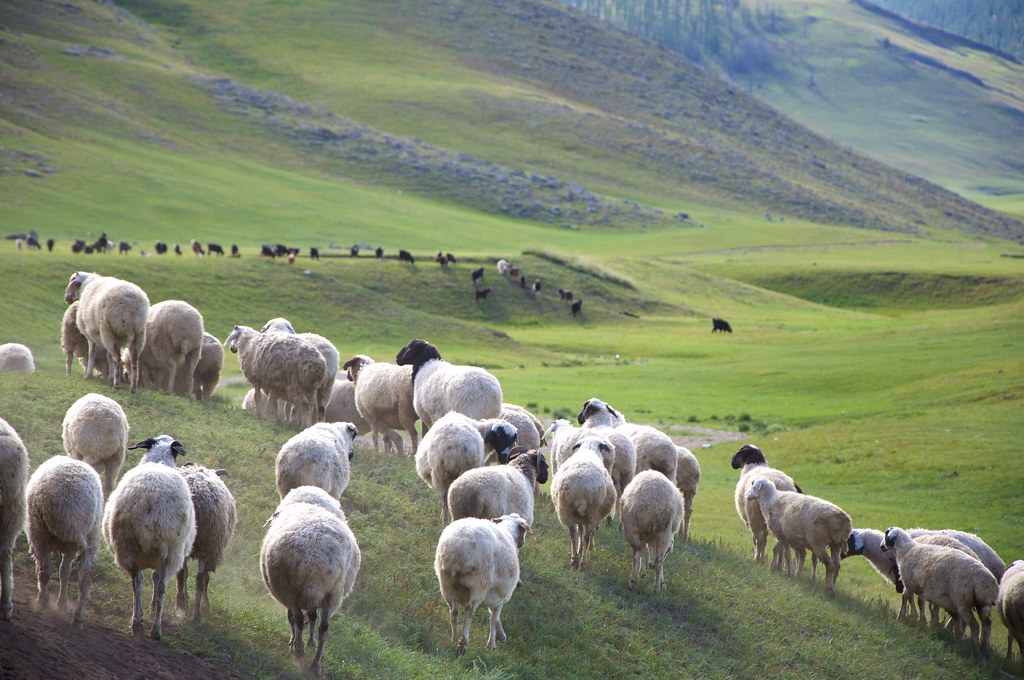
Number of Mongolian livestock reaches 57.6 million at the end of 2024 www.akipress.com
The number of livestock in Mongolia reached 57.6 million at the end of 2024, down 7 million or 10.9% compared to last year, the National Statistics Office reported.
The Office conducted livestock census from December 7 to December 17, 2024.
The number of livestock, excluding camels, decreased. In particular, the total number of horses was 4.7 million, cows 5.1 million, sheep 24.5 million, goats 22.9 million, while the number of camels was 480,600, an increase of 1.4%.
Khovsgol province is in the top five provinces in livestock numbers with a total of 5.2 million heads, followed by Uvurkhangai province with a total of 5.1 million heads, Tuv province with a total of 4.2 million heads, Arkhangai province with 4.1 million heads, and Bayankhongor province with 4.0 million heads.
Arkhangai province ranks first in the number of horses and cows, Omnogovi province in the number of camels, Uvurkhangai province in the number of sheep, and Bayankhongor province in the number of goats.
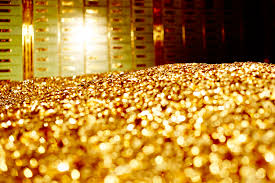
Mongolia's central bank acquires 16.5 tons of gold in 2024 www.xinhuanet.com
The Bank of Mongolia, the nation's central bank, procured a total of 16.5 tons of gold from legal entities and individuals throughout 2024, local media reported on Wednesday, citing an official statement from the bank.
This represents an approximate 8 percent decline compared to the previous year's gold purchases, the bank said.
Central banks globally hold gold as a key component of their foreign exchange reserves, and Mongolia is no exception.
Despite the reduction in gold acquisitions, the Asian country's foreign exchange reserves reached an all-time high of 5.5 billion U.S. dollars by the end of 2024, according to the Bank of Mongolia.
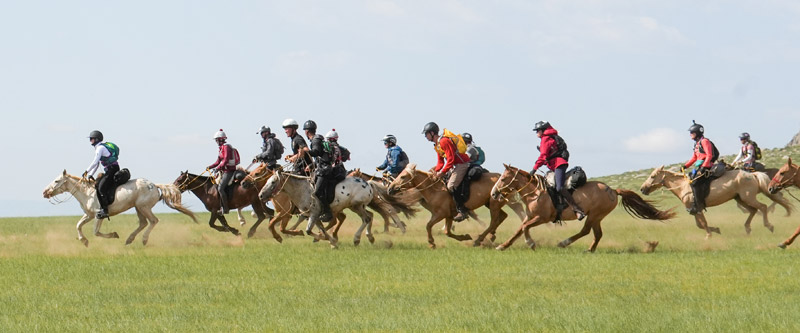
Mongolian horses are contracting H5N1 under the radar, says new study www.telegraph.co.uk
Horses are silent carriers of H5N1 bird flu, a new study from the University of Glasgow has found.
Testing of horses in Mongolia found that several had antibodies for H5N1, indicating prior infection. None of the animals had ever been reported as sick, however, meaning they can carry the virus asymptotically.
The findings raise concerns for people who live and work closely with horses and other equids – from American cowboys to Scottish crofters and their Shetland ponies.
The fear is they could catch the virus from their animals.
This year alone, over 60 people in the US – primarily agricultural workers – have fallen ill after exposure to infected cattle. If spillover events between wild birds and horses, donkey and other equids become more common, they could potentially become a significant vector for the virus.
The researchers took blood samples from horse herds across Mongolia and found “conclusive” evidence of spillover infections from wild birds. Among the 1,000 horses tested, at least nine had antibodies for bird flu.
The tests were conducted in Arkhangai Province, a wetland area with a large population of wild birds, and the Gobi Desert, a dry region with far less wildlife.
It’s unclear how the Mongolian horses contracted the virus, although millions of other mammals including cats, dogs, skunks, pigs, and even a polar bear have become infected by either consuming birds or coming into contact with their faeces, dropped into their environment as the birds fly above.
Last year, Mongolia experienced a deadly winter season known as ‘dzud,’ which killed millions of farm animals through cold and starvation.
It is possible that horses were forced to feed on the carcasses of dead birds, the natural carriers of H5N1, as much of Mongolia’s grazing land was frozen over. Though horses are herbivores, they will scavenge on meat as a last resort.
Wild birds infected with H5N1 have been found on every continent on Earth. The virus has been circulating in birds like waterfowl and ducks in Britain for at least three years and spillover events into mammals have occurred in animals like foxes and otters.
The virus can also spread between species, meaning that once it’s got into a herd, it could transmit between them, particularly if they are sharing the same stable, pen, food, or equipment.
It’s of particular concern in Mongolia, a country home to five million horses, almost two million more than its human population.
The animals are deeply embedded in the nation’s culture and economy and people live and work in close contact with the creatures, potentially increasing the likelihood of human transmission.
The Mongolian horse, a breed that traces back to the era of Genghis Khan, is used for many purposes like travel, herding, and sport. Horse racing in particular is deeply rooted in the country’s nomadic heritage, with school children often used as jockeys.
The creatures are also used to make airag, the national drink made from fermented horse milk and some are slaughtered for meat.
The fact horses can be infected with bird flu is a particular worry given the current situation in North America where H5N1 has spread rapidly among dairy cattle, the researchers said.
The virus could mix with others inside horses – a process known as reassortment – potentially creating a new mutant bird flu strain.
Horses can already catch equine flu, caused by H3N8, which is endemic to North America.
With the rapid spread of avian influenza among cattle in the US, the likelihood of horses and other equids coming into contact with infected cows – and the chances of horses becoming co-infected with both avian and equine influenza viruses and creating a new flu – significantly increases.
It’s the same process which triggered the 2008/09 H1N1 swine flu pandemic, where pigs were co-infected with avian and human flu and created a new, more dangerous type of virus.
It is also what was thought to have caused the 1918 Spanish flu pandemic, when pigs in Haskell County, Kansas, were infected with bird, mammal, and human influenzas at the same time.
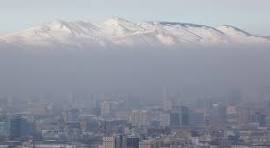
Periods of air pollution likely to continue in Ulaanbaatar through March www.crisis24.garda.com
Periods of heavy air pollution are likely in parts of Ulaanbaatar, Mongolia, during the late autumn and winter months. Air pollution-induced low visibility can lead to ground transport and flight disruptions throughout the affected area. Visibility problems are typically worse in late December-February, but periodic disruptions can occur November-March.
Ulaanbaatar's rapid growth and expansion have led to poverty and air pollution during the colder months. Ulaanbaatar's location in the narrow valley of the Bogd Mountain on the Tuul River also creates a thermal inversion layer, trapping pollution over the city. Most of the poor live in yurts or gers, traditional dwellings unconnected to the central heating system, mostly in the north of the city. During the colder months, most burn coal for heat, increasing air pollution. Ulaanbaatar's Soviet-era coal-burning power plants and vehicle emissions also contribute to winter air pollution.
The highest concentrations of air pollution usually occur during periods of extended air stagnation, when pollution from industry, residential heating, and automobiles cannot escape the region. Severe pollution levels tend to spike during winter cold spells when many people burn low-quality coal to heat their homes and businesses. Authorities have tried to reduce air pollution by curbing vehicle use, improving home insulation, and expanding the use of natural gas to reduce reliance on coal.
Reduced visibility during periods of severe air pollution may cause transport disruptions. Flight delays could occur at Chinggis Khaan International Airport (UBN), especially during overnight and early morning hours when relative humidity is high. Traffic disruptions resulting from inadequate visibility are also possible on highways and secondary roads in the region during periods of severe pollution.
Officials may implement temporary commercial restrictions. Provincial and municipal officials usually take measures to reduce heavy industry and sometimes restrict vehicle operations in response to severe air pollution. Under a red alert, Beijing authorities could restrict private vehicle use within the municipality; officials only permit vehicles with even-numbered plates to drive on even calendar days and odd-numbered plates on odd days. Severe air pollution also often causes the suspension of large-scale outdoor construction projects. Under previous orange- and red-level alerts, officials throughout the region ordered thousands of heavy industry and manufacturing facilities to cease operations. Similar policies are possible in areas throughout the region during periods of severe pollution. Such measures do not typically lead to severe supply chain disruptions, but there could be delays to some time-sensitive orders and deliveries.
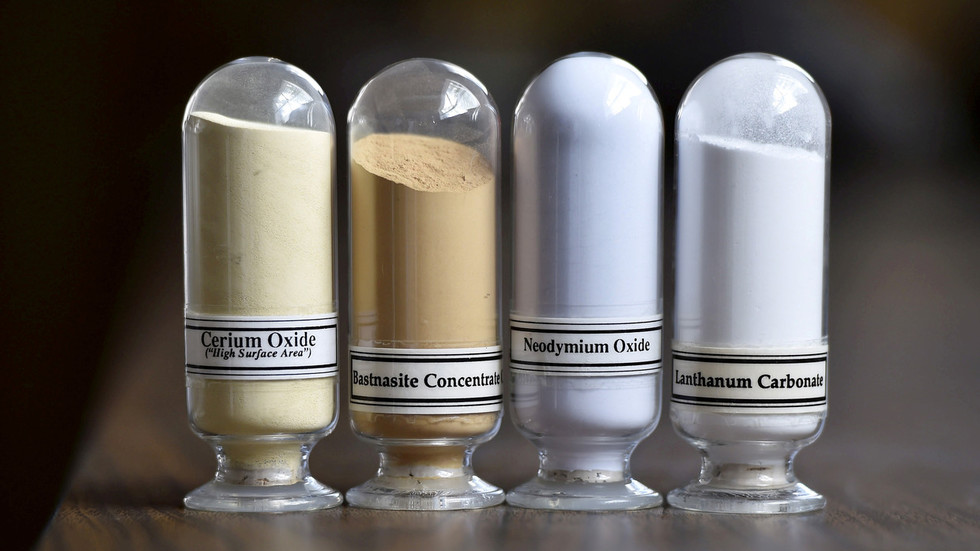
Colorado start-up raises $5.1m to advance critical mineral separation with biochemistry www.mining.com
Alta Resource Technologies, a Colorado-based company using advanced biochemistry in mineral separation, announced Tuesday it has raised $5.1 million in an oversubscribed seed round co-led by DCVC and Voyager Ventures, with participation from Orion Industrial Ventures, Overture, and WovenEarth Ventures.
Alta’s biochemistry platform leverages technology licensed from Lawrence Livermore National Laboratory co-developed with collaborators including researchers at Pennsylvania State University.
Sign Up for the Mining News Digest
With its first products, Alta aims to increase supplies of rare earth elements like neodymium and dysprosium – essential for electric vehicle motors, wind turbines, and defense technologies – by cost-effectively separating them from abundant low-grade sources and end-of-life products that cannot be processed using conventional methods.
Alta said its technology uses custom-designed proteins that act like microscopic robots to separate high-purity rare earth elements and other critical minerals with unprecedented selectivity and cost-effectiveness.
The Department of Defense has implemented a strategy to develop domestic supply chains to ensure continued access to the rare earth materials
The company has also secured nearly $1 million in grant funding from the federal government, including the Department of Defense’s DARPA, and the State of Colorado. Earlier funding was provided by Baruch Future Ventures and Climate Capital (now Juniper).
Rare earth metals demand is projected to increase at 10.4% compound annual growth rate (CAGR) from 2024-2033. There is currently only one producing rare earths mine in the US- MP Materials’ Mountain Pass in California.
The Department of Defense has implemented a strategy to develop domestic supply chains to ensure continued access to the rare earth materials needed to manufacture the permanent magnets used in US military weapons systems, as domestic shortages of rare earth elements and could derail the energy transition, stunt economic growth, and potentially undermine national security.
“Biology has solved the problem of ultra-selective mineral separation over billions of years, but translating that into practical applications has been elusive – until now,” Alta CEO Nathan Ratledge, PhD, said in Tuesday’s news release.
“Our technology leverages specially engineered proteins that can bind to specific metals with unprecedented selectivity, even at low concentrations in complex mixtures.
By deploying these proteins in a continuous, scalable process, we can unlock vast untapped mineral resources here at home, strengthening our supply chains and national security while setting a new standard for environmentally responsible mining.”

Mongolia starts using traditional Mongol script in public office www.akipress.com
Starting in 2025, public office activities in Mongolia will be conducted in dual scripts, Cyrillic and Mongol Script, in line with the Law on the Mongolian Language, the Ministry of Education of Mongolia reported.
"In order to implement the law on the Mongolian language, adopted by the Parliament in 2015, state organizations and local governments will use the classical script in documents in addition to the Cyrillic script from 2025," the Ministry said in a statement.
The law came into force on January 1, and the implementation began on January 2 as the first working day of 2025. Educational institutions will teach the national Mongolian script to ensure the implementation of the law.
According to the widespread theory on the creation of a national script, Genghis Khan issued a decree on the adaptation of the Uyghur script to the Mongolian language. While signing treaties with China, where hieroglyphs were written vertically, the Mongols introduced a vertical system of their writing. The earliest monument, a text carved on a stone stele known as the "Genghis Stone," is kept in the Hermitage.
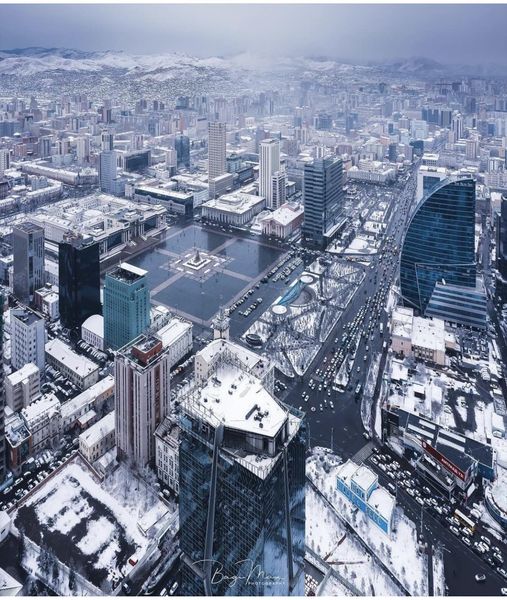
Key Political Risks Facing Central Asia & Mongolia in 2025 www.areterapa.com
Central Asia is entering 2025 amidst growing geopolitical uncertainty. Tensions between the West, Russia and China have the potential to disrupt global supply chains, financial markets, security dynamics and political stability in the region.
New geopolitical shocks could cause resource supply difficulties, drive up inflation, and hinder economic growth. In addition, domestic political instability will remain a key risk to monitor throughout the region in 2025.
Aretera's Annual Forecast for 2025, which looks at the key political and geopolitical risks in 30 countries across two continents, aims to deliver greater insight and understanding to those tasked with preparing for what lies ahead in Central Asia & Mongolia.
In addition to covering the key political and geopolitical risks for 2025, our Annual Forecast also includes an initial projection on the 2025 election year and selected opportunities for businesses in six regional markets.
See the full annual forecast: https://areterapa.com/insight_20250106
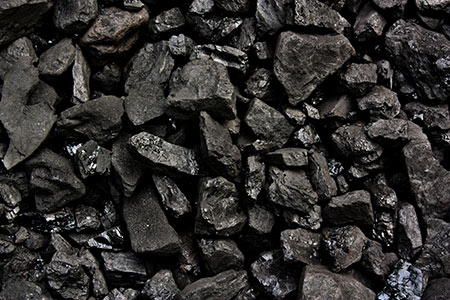
Coal Exports Surpass 80 Million Tons for the First Time www.montsame.mn
Mongolian Customs General Administration has released preliminary data on Mongolia’s mineral exports for 2024.
According to the Customs General Administration, coal export revenue in 2024 amounted to USD 8.6 billion. The total volume of exported coal reached 83.7 million tons, marking the first time in history that coal exports have exceeded 80 million tons. Last year, Mongolia exported 83.7 million tons of bituminous and lignite coal, earning USD 8.6 billion. At the same time, the volume increased by over 20 percent compared to the previous year.
In 2024, Mongolia had planned to export 78 million tons of coal at an average price of USD 115 per ton. Although the volume target was exceeded, the average export price was approximately USD 103 per ton.
The total export value of the six key mineral products reached USD 13.2 billion, a 5 percent increase compared to 2023.

Mongolia Enters Trip.com Platform www.montsame.mn
Trip.com, a global leader in the tourism industry with over a half billion users worldwide, began officially promoting Mongolia. This marks an important milestone for Mongolia's tourism sector.
In September 2024, Minister of Culture of Mongolia Nomin Chinbat signed a Cooperation Agreement with Jane Sun, President of Trip.com Group. Under the agreement, both parties aim to promote Mongolia’s nomadic culture, traditions, and stunning natural landscapes through the National Brand "Go Mongolia." The Promotion Campaign will market to users from South Korea, Hong Kong, and China, focusing on selling tourism products and services.
To enhance Mongolian tourism in the Chinese market, various types of content are now being distributed to users through social media platforms like Weibo and WeChat. These platforms also provide direct access for purchasing flight tickets and tourism products and services.
The year 2024 was successful for Mongolia's tourism sector, with over 810,000 tourists visiting the country, which is the highest number in history. To further reduce seasonality and develop winter tourism, the Ministry of Culture, Sports, and Tourism is collaborating with professional organizations. The Ministry has set a goal of attracting 2 million tourists by 2028.
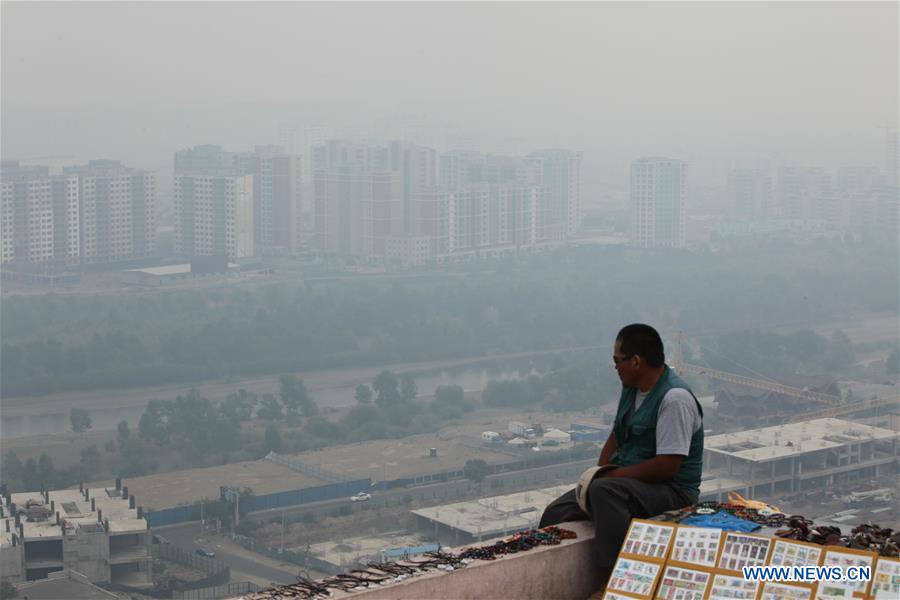
Mongolia’s Political Double Speak on Combating Air Pollution www.thediplomat.com
The capital of Mongolia, Ulaanbaatar continue to rank among the most polluted cities in the world. This year’s extreme air pollution demonstrated the failure of a series of government policies, highlighting the amount of financial resources wasted on ineffective fixes in the past decade. The culmination of inefficient policies, undeliverable goals, redundant short-term solutions, and the resident’s dependence on coal is wreaking havoc on Mongolians’ health and longevity.
Ulaanbaatar is one of the coldest cities in the world due to its high elevation. The capital is also surrounded by mountains and hills that traps carbon, smog, and other short-lived climate pollutants (SLCPs). In the first week of January 2025, Ulaanbaatar ranked as the fourth most-polluted city in the world in the Air Quality Index (AQI). In comparison to manufacturing hubs in India, Bangladesh, and China – which all take leading positions among the world’s most polluted countries as well – in Mongolia’s case, pollution is caused more by burning raw coal, polluting automobiles, and unregulated settlers in the outskirts of Ulaanbaatar, among other factors.
In September 2024, the Ministry of Economy and Development, Ministry of Environment and Climate Change, Ministry of Health, and National Center for Public Health, in cooperation with the United Nations Development Program and the EU office in Mongolia, organized “Air Pollution Investment Case” to address the dire need to solve Mongolia’s air pollution. Experts highlighted that air pollution causes 2,839 deaths annually, and household air pollution leads to over 4,300 deaths each year.
Mongolian policymakers, in tandem with receiving millions in assistance from global partners, have talked about eliminating coal burning and reducing air pollution for decades. The pledge to reduce coal consumption as a domestic heat source in the ger districts has been used for political advantage. To many policymakers, embracing that narrative was important to attract financial support from international organizations and partners, yet little has been done to actually implement the necessary changes.
Researchers and working groups have consistently (for example, in 2014, 2018, 2019, 2020, and 2021) assessed that Ulaanbaatar’s air pollution is a major public health issue and a major contributing factor to an increase of brain and respiratory diseases, pregnancy losses, and cancers. For over a decade, these and similar assessments have recommended the following steps:
First, completely eliminate coal burning as a domestic heat source and replace it with natural gas, or provide clean coal as an interim solution. Second, continue to remove gers and provide alternative housing with appropriate insulation, such as apartments or houses. Third, continue to eliminate indoor smoking, particularly inside homes. Fourth, work on regulations eliminating diesel and other vehicular exhaust within the city. And fifth, move to mandate clean-emission natural gas, electric, or hybrid vehicles as much as possible within the city.
For decades, experts have warned that the main culprit for Mongolia’s air pollution is the burning of coal and the lack of modern engineering infrastructure that can support clean air systems. Advocacy groups and development banks have recommended and financed many, many projects and initiatives to address the issue. A decade later, these recommendations, however, seem to be nothing but so many PDF files.
According to the Climate and Clean Air Coalition, “In 2017, air pollution in the country’s capital city of Ulaanbaatar was found to be 7.5 times higher than the safe limit, leading the National Security Council of Mongolia to declare that air pollution had reached disaster levels, derived sources including the household energy, transportation, coal, and wastes sectors.”
In 2018, the government pledged $55 million to reduce air pollution, including by phasing out coal burning. So far, these pledges have not materialized, nor have the goals been reached – such as a target to halve air pollution by 2025. In 2017, Mongolia had a yearly average of 62 micrograms per cubic meter of PM2.5 particles. In 2023, the level had crept up to 73.
Programs supported by international partners have come to similar ends. As NPR noted in a 2019 article, “with support from the World Bank, the government distributed low-emission stoves a few years ago, but that program fizzled out in 2015.”
Since 2019, the Mongolian government has made some efforts in reducing air pollution by banning the use of raw coal. However, given the socioeconomic status of the working class, it is fiscally impossible for people to buy higher priced coal. The 58 percent of the city’s workforce who currently live in ger districts have little or no access to infrastructure that can actually help to introducing clean-air cooking and heating systems. These ger districts both contribute to and are heavily affected by air pollution.
Former Minister of Environment and Tourism Oyunkhorol Dulamsuren stated that “between 2011 and 2015, the government spent more than $37 million, plus $47 million from international donors, on tackling air pollution.” For example, in cooperation with with UNICEF, several projects and research initiatives have been conducted to test stove efficiency, particularly in the ger districts. Yet all these initiatives – and all that money – had come to naught.
By assessing from the millions of dollars spent on tackling air pollution, it begs the question where do all these funds go if there has not been a notable improvement of the city’s engineering and infrastructure?
In response to the government’s inability to fix the air pollution crisis, the Mongolian public has demonstrated consistently between 2016 and 2024. Every winter, Mongolian parents in particular voice their concerns over the impact of increasing air pollution on their and their children’s health and well-being. Unfortunately, managing air pollution has become a normal part of Mongolians’ daily life during the months of November to late March.
In December 2024, another peaceful demonstration took place in Sukhbaatar Square. Human rights and children’s advocacy groups and individuals demanded that the government, headed by Prime Minister Oyun-Erdene Luvsannamsrai, tackle air pollution.
In response, Oyun-Erdene held an irregular session one day before the New Year to address the nation on the severity of the air pollution. Some of the solutions the Cabinet proposed include creating a public transit system, building a freeway, insulating 95,000 households in the ger district.
While these are good talking points, measures like creating a public transit system to reduce automobile smog and building a freeway to reduce the cars on the roads in Ulaanbaatar will take years. For decades, Mongolian policymakers have discussed transit systems like Japan’s or public metro systems like those in Moscow and Beijing. To this day, none has materialized. Instead, the Mayor’s Office and municipalities prefer short cuts and short-term solutions like installing air purifiers and exhorting the public to wear facemasks. For example, the Mayor’s Office implemented a policy that restricts cars to drive on every other day, depending on their license plate number.
As evidenced by the continuing air pollution crisis, however, such approaches have a minimal impact on solving air pollution. But they have made the daily lives of Ulaanbaatar residents more difficult as they have to manage the daily commute to work or dropping their children to school.
With that history in mind, despite the Cabinet meeting and Oyun-Erdene’s address, residents of Ulaanbaatar remain uncertain and not confident in the latest measures. The so-called new measures – such as increasing investments and financial support to reduce air pollution, “constructing energy-efficient and green residential towns, expanding the road network, [and] supporting the development of public transportation systems” – have been empty political promises for decades. Without more holistic fixes such as ensuring proper access to city sewage systems, electricity, and clean water supplies, short-term solutions such as the insulation of 95,000 households are a waste of public financial resources.
Despite these narratives on combating air pollution and modernizing the ger district, it seems that Mongolia’s working class, especially the 38 percent of people living in poverty, will continue to depend on burning coal to hear their homes.
With air pollution as a leading crisis, the Ulaanbaatar Development Index dropped to 0.474, receiving an F grade in 2024. The index assess quality of life, implementation of policies, and competitiveness, with 1.000 as the highest possible score. Mongolia’s long-term development goals include a target to improve Ulaanbaatar’s score to 0.9, but given the slow progress on renewable energy, much less housing initiatives to transfer ger districts to apartment units, this winter does provide much reason for hope.
The current government’s growing economic incentives are not quite translated toward making the Mongolian households any healthier. The lack of policy and implementation continuity from the Mayor’s Office only make things worse. A growing sense of unhappiness and daily frustration over air pollution are the lived realities of Mongolians living in Ulaanbaatar during the harsh winter months. Given Mongolia’s sparse population, a grand bargain for economic goals cannot come at the cost of the Mongolian people’s health, happiness, and longevity.
BY Bolor Lkhaajav
Bolor Lkhaajav is a researcher specializing in Mongolia, China, Russia, Japan, East Asia, and the Americas. She holds an M.A. in Asia-Pacific Studies from the University of San Francisco.
- «
- 1
- 2
- 3
- 4
- 5
- 6
- 7
- 8
- 9
- 10
- 11
- 12
- 13
- 14
- 15
- 16
- 17
- 18
- 19
- 20
- 21
- 22
- 23
- 24
- 25
- 26
- 27
- 28
- 29
- 30
- 31
- 32
- 33
- 34
- 35
- 36
- 37
- 38
- 39
- 40
- 41
- 42
- 43
- 44
- 45
- 46
- 47
- 48
- 49
- 50
- 51
- 52
- 53
- 54
- 55
- 56
- 57
- 58
- 59
- 60
- 61
- 62
- 63
- 64
- 65
- 66
- 67
- 68
- 69
- 70
- 71
- 72
- 73
- 74
- 75
- 76
- 77
- 78
- 79
- 80
- 81
- 82
- 83
- 84
- 85
- 86
- 87
- 88
- 89
- 90
- 91
- 92
- 93
- 94
- 95
- 96
- 97
- 98
- 99
- 100
- 101
- 102
- 103
- 104
- 105
- 106
- 107
- 108
- 109
- 110
- 111
- 112
- 113
- 114
- 115
- 116
- 117
- 118
- 119
- 120
- 121
- 122
- 123
- 124
- 125
- 126
- 127
- 128
- 129
- 130
- 131
- 132
- 133
- 134
- 135
- 136
- 137
- 138
- 139
- 140
- 141
- 142
- 143
- 144
- 145
- 146
- 147
- 148
- 149
- 150
- 151
- 152
- 153
- 154
- 155
- 156
- 157
- 158
- 159
- 160
- 161
- 162
- 163
- 164
- 165
- 166
- 167
- 168
- 169
- 170
- 171
- 172
- 173
- 174
- 175
- 176
- 177
- 178
- 179
- 180
- 181
- 182
- 183
- 184
- 185
- 186
- 187
- 188
- 189
- 190
- 191
- 192
- 193
- 194
- 195
- 196
- 197
- 198
- 199
- 200
- 201
- 202
- 203
- 204
- 205
- 206
- 207
- 208
- 209
- 210
- 211
- 212
- 213
- 214
- 215
- 216
- 217
- 218
- 219
- 220
- 221
- 222
- 223
- 224
- 225
- 226
- 227
- 228
- 229
- 230
- 231
- 232
- 233
- 234
- 235
- 236
- 237
- 238
- 239
- 240
- 241
- 242
- 243
- 244
- 245
- 246
- 247
- 248
- 249
- 250
- 251
- 252
- 253
- 254
- 255
- 256
- 257
- 258
- 259
- 260
- 261
- 262
- 263
- 264
- 265
- 266
- 267
- 268
- 269
- 270
- 271
- 272
- 273
- 274
- 275
- 276
- 277
- 278
- 279
- 280
- 281
- 282
- 283
- 284
- 285
- 286
- 287
- 288
- 289
- 290
- 291
- 292
- 293
- 294
- 295
- 296
- 297
- 298
- 299
- 300
- 301
- 302
- 303
- 304
- 305
- 306
- 307
- 308
- 309
- 310
- 311
- 312
- 313
- 314
- 315
- 316
- 317
- 318
- 319
- 320
- 321
- 322
- 323
- 324
- 325
- 326
- 327
- 328
- 329
- 330
- 331
- 332
- 333
- 334
- 335
- 336
- 337
- 338
- 339
- 340
- 341
- 342
- 343
- 344
- 345
- 346
- 347
- 348
- 349
- 350
- 351
- 352
- 353
- 354
- 355
- 356
- 357
- 358
- 359
- 360
- 361
- 362
- 363
- 364
- 365
- 366
- 367
- 368
- 369
- 370
- 371
- 372
- 373
- 374
- 375
- 376
- 377
- 378
- 379
- 380
- 381
- 382
- 383
- 384
- 385
- 386
- 387
- 388
- 389
- 390
- 391
- 392
- 393
- 394
- 395
- 396
- 397
- 398
- 399
- 400
- 401
- 402
- 403
- 404
- 405
- 406
- 407
- 408
- 409
- 410
- 411
- 412
- 413
- 414
- 415
- 416
- 417
- 418
- 419
- 420
- 421
- 422
- 423
- 424
- 425
- 426
- 427
- 428
- 429
- 430
- 431
- 432
- 433
- 434
- 435
- 436
- 437
- 438
- 439
- 440
- 441
- 442
- 443
- 444
- 445
- 446
- 447
- 448
- 449
- 450
- 451
- 452
- 453
- 454
- 455
- 456
- 457
- 458
- 459
- 460
- 461
- 462
- 463
- 464
- 465
- 466
- 467
- 468
- 469
- 470
- 471
- 472
- 473
- 474
- 475
- 476
- 477
- 478
- 479
- 480
- 481
- 482
- 483
- 484
- 485
- 486
- 487
- 488
- 489
- 490
- 491
- 492
- 493
- 494
- 495
- 496
- 497
- 498
- 499
- 500
- 501
- 502
- 503
- 504
- 505
- 506
- 507
- 508
- 509
- 510
- 511
- 512
- 513
- 514
- 515
- 516
- 517
- 518
- 519
- 520
- 521
- 522
- 523
- 524
- 525
- 526
- 527
- 528
- 529
- 530
- 531
- 532
- 533
- 534
- 535
- 536
- 537
- 538
- 539
- 540
- 541
- 542
- 543
- 544
- 545
- 546
- 547
- 548
- 549
- 550
- 551
- 552
- 553
- 554
- 555
- 556
- 557
- 558
- 559
- 560
- 561
- 562
- 563
- 564
- 565
- 566
- 567
- 568
- 569
- 570
- 571
- 572
- 573
- 574
- 575
- 576
- 577
- 578
- 579
- 580
- 581
- 582
- 583
- 584
- 585
- 586
- 587
- 588
- 589
- 590
- 591
- 592
- 593
- 594
- 595
- 596
- 597
- 598
- 599
- 600
- 601
- 602
- 603
- 604
- 605
- 606
- 607
- 608
- 609
- 610
- 611
- 612
- 613
- 614
- 615
- 616
- 617
- 618
- 619
- 620
- 621
- 622
- 623
- 624
- 625
- 626
- 627
- 628
- 629
- 630
- 631
- 632
- 633
- 634
- 635
- 636
- 637
- 638
- 639
- 640
- 641
- 642
- 643
- 644
- 645
- 646
- 647
- 648
- 649
- 650
- 651
- 652
- 653
- 654
- 655
- 656
- 657
- 658
- 659
- 660
- 661
- 662
- 663
- 664
- 665
- 666
- 667
- 668
- 669
- 670
- 671
- 672
- 673
- 674
- 675
- 676
- 677
- 678
- 679
- 680
- 681
- 682
- 683
- 684
- 685
- 686
- 687
- 688
- 689
- 690
- 691
- 692
- 693
- 694
- 695
- 696
- 697
- 698
- 699
- 700
- 701
- 702
- 703
- 704
- 705
- 706
- 707
- 708
- 709
- 710
- 711
- 712
- 713
- 714
- 715
- 716
- 717
- 718
- 719
- 720
- 721
- 722
- 723
- 724
- 725
- 726
- 727
- 728
- 729
- 730
- 731
- 732
- 733
- 734
- 735
- 736
- 737
- 738
- 739
- 740
- 741
- 742
- 743
- 744
- 745
- 746
- 747
- 748
- 749
- 750
- 751
- 752
- 753
- 754
- 755
- 756
- 757
- 758
- 759
- 760
- 761
- 762
- 763
- 764
- 765
- 766
- 767
- 768
- 769
- 770
- 771
- 772
- 773
- 774
- 775
- 776
- 777
- 778
- 779
- 780
- 781
- 782
- 783
- 784
- 785
- 786
- 787
- 788
- 789
- 790
- 791
- 792
- 793
- 794
- 795
- 796
- 797
- 798
- 799
- 800
- 801
- 802
- 803
- 804
- 805
- 806
- 807
- 808
- 809
- 810
- 811
- 812
- 813
- 814
- 815
- 816
- 817
- 818
- 819
- 820
- 821
- 822
- 823
- 824
- 825
- 826
- 827
- 828
- 829
- 830
- 831
- 832
- 833
- 834
- 835
- 836
- 837
- 838
- 839
- 840
- 841
- 842
- 843
- 844
- 845
- 846
- 847
- 848
- 849
- 850
- 851
- 852
- 853
- 854
- 855
- 856
- 857
- 858
- 859
- 860
- 861
- 862
- 863
- 864
- 865
- 866
- 867
- 868
- 869
- 870
- 871
- 872
- 873
- 874
- 875
- 876
- 877
- 878
- 879
- 880
- 881
- 882
- 883
- 884
- 885
- 886
- 887
- 888
- 889
- 890
- 891
- 892
- 893
- 894
- 895
- 896
- 897
- 898
- 899
- 900
- 901
- 902
- 903
- 904
- 905
- 906
- 907
- 908
- 909
- 910
- 911
- 912
- 913
- 914
- 915
- 916
- 917
- 918
- 919
- 920
- 921
- 922
- 923
- 924
- 925
- 926
- 927
- 928
- 929
- 930
- 931
- 932
- 933
- 934
- 935
- 936
- 937
- 938
- 939
- 940
- 941
- 942
- 943
- 944
- 945
- 946
- 947
- 948
- 949
- 950
- 951
- 952
- 953
- 954
- 955
- 956
- 957
- 958
- 959
- 960
- 961
- 962
- 963
- 964
- 965
- 966
- 967
- 968
- 969
- 970
- 971
- 972
- 973
- 974
- 975
- 976
- 977
- 978
- 979
- 980
- 981
- 982
- 983
- 984
- 985
- 986
- 987
- 988
- 989
- 990
- 991
- 992
- 993
- 994
- 995
- 996
- 997
- 998
- 999
- 1000
- 1001
- 1002
- 1003
- 1004
- 1005
- 1006
- 1007
- 1008
- 1009
- 1010
- 1011
- 1012
- 1013
- 1014
- 1015
- 1016
- 1017
- 1018
- 1019
- 1020
- 1021
- 1022
- 1023
- 1024
- 1025
- 1026
- 1027
- 1028
- 1029
- 1030
- 1031
- 1032
- 1033
- 1034
- 1035
- 1036
- 1037
- 1038
- 1039
- 1040
- 1041
- 1042
- 1043
- 1044
- 1045
- 1046
- 1047
- 1048
- 1049
- 1050
- 1051
- 1052
- 1053
- 1054
- 1055
- 1056
- 1057
- 1058
- 1059
- 1060
- 1061
- 1062
- 1063
- 1064
- 1065
- 1066
- 1067
- 1068
- 1069
- 1070
- 1071
- 1072
- 1073
- 1074
- 1075
- 1076
- 1077
- 1078
- 1079
- 1080
- 1081
- 1082
- 1083
- 1084
- 1085
- 1086
- 1087
- 1088
- 1089
- 1090
- 1091
- 1092
- 1093
- 1094
- 1095
- 1096
- 1097
- 1098
- 1099
- 1100
- 1101
- 1102
- 1103
- 1104
- 1105
- 1106
- 1107
- 1108
- 1109
- 1110
- 1111
- 1112
- 1113
- 1114
- 1115
- 1116
- 1117
- 1118
- 1119
- 1120
- 1121
- 1122
- 1123
- 1124
- 1125
- 1126
- 1127
- 1128
- 1129
- 1130
- 1131
- 1132
- 1133
- 1134
- 1135
- 1136
- 1137
- 1138
- 1139
- 1140
- 1141
- 1142
- 1143
- 1144
- 1145
- 1146
- 1147
- 1148
- 1149
- 1150
- 1151
- 1152
- 1153
- 1154
- 1155
- 1156
- 1157
- 1158
- 1159
- 1160
- 1161
- 1162
- 1163
- 1164
- 1165
- 1166
- 1167
- 1168
- 1169
- 1170
- 1171
- 1172
- 1173
- 1174
- 1175
- 1176
- 1177
- 1178
- 1179
- 1180
- 1181
- 1182
- 1183
- 1184
- 1185
- 1186
- 1187
- 1188
- 1189
- 1190
- 1191
- 1192
- 1193
- 1194
- 1195
- 1196
- 1197
- 1198
- 1199
- 1200
- 1201
- 1202
- 1203
- 1204
- 1205
- 1206
- 1207
- 1208
- 1209
- 1210
- 1211
- 1212
- 1213
- 1214
- 1215
- 1216
- 1217
- 1218
- 1219
- 1220
- 1221
- 1222
- 1223
- 1224
- 1225
- 1226
- 1227
- 1228
- 1229
- 1230
- 1231
- 1232
- 1233
- 1234
- 1235
- 1236
- 1237
- 1238
- 1239
- 1240
- 1241
- 1242
- 1243
- 1244
- 1245
- 1246
- 1247
- 1248
- 1249
- 1250
- 1251
- 1252
- 1253
- 1254
- 1255
- 1256
- 1257
- 1258
- 1259
- 1260
- 1261
- 1262
- 1263
- 1264
- 1265
- 1266
- 1267
- 1268
- 1269
- 1270
- 1271
- 1272
- 1273
- 1274
- 1275
- 1276
- 1277
- 1278
- 1279
- 1280
- 1281
- 1282
- 1283
- 1284
- 1285
- 1286
- 1287
- 1288
- 1289
- 1290
- 1291
- 1292
- 1293
- 1294
- 1295
- 1296
- 1297
- 1298
- 1299
- 1300
- 1301
- 1302
- 1303
- 1304
- 1305
- 1306
- 1307
- 1308
- 1309
- 1310
- 1311
- 1312
- 1313
- 1314
- 1315
- 1316
- 1317
- 1318
- 1319
- 1320
- 1321
- 1322
- 1323
- 1324
- 1325
- 1326
- 1327
- 1328
- 1329
- 1330
- 1331
- 1332
- 1333
- 1334
- 1335
- 1336
- 1337
- 1338
- 1339
- 1340
- 1341
- 1342
- 1343
- 1344
- 1345
- 1346
- 1347
- 1348
- 1349
- 1350
- 1351
- 1352
- 1353
- 1354
- 1355
- 1356
- 1357
- 1358
- 1359
- 1360
- 1361
- 1362
- 1363
- 1364
- 1365
- 1366
- 1367
- 1368
- 1369
- 1370
- 1371
- 1372
- 1373
- 1374
- 1375
- 1376
- 1377
- 1378
- 1379
- 1380
- 1381
- 1382
- 1383
- 1384
- 1385
- 1386
- 1387
- 1388
- 1389
- 1390
- 1391
- 1392
- 1393
- 1394
- 1395
- 1396
- 1397
- 1398
- 1399
- 1400
- 1401
- 1402
- 1403
- 1404
- 1405
- 1406
- 1407
- 1408
- 1409
- 1410
- 1411
- 1412
- 1413
- 1414
- 1415
- 1416
- 1417
- 1418
- 1419
- 1420
- 1421
- 1422
- 1423
- 1424
- 1425
- 1426
- 1427
- 1428
- 1429
- 1430
- 1431
- 1432
- 1433
- 1434
- 1435
- 1436
- 1437
- 1438
- 1439
- 1440
- 1441
- 1442
- 1443
- 1444
- 1445
- 1446
- 1447
- 1448
- 1449
- 1450
- 1451
- 1452
- 1453
- 1454
- 1455
- 1456
- 1457
- 1458
- 1459
- 1460
- 1461
- 1462
- 1463
- 1464
- 1465
- 1466
- 1467
- 1468
- 1469
- 1470
- 1471
- 1472
- 1473
- 1474
- 1475
- 1476
- 1477
- 1478
- 1479
- 1480
- 1481
- 1482
- 1483
- 1484
- 1485
- 1486
- 1487
- 1488
- 1489
- 1490
- 1491
- 1492
- 1493
- 1494
- 1495
- 1496
- 1497
- 1498
- 1499
- 1500
- 1501
- 1502
- 1503
- 1504
- 1505
- 1506
- 1507
- 1508
- 1509
- 1510
- 1511
- 1512
- 1513
- 1514
- 1515
- 1516
- 1517
- 1518
- 1519
- 1520
- 1521
- 1522
- 1523
- 1524
- 1525
- 1526
- 1527
- 1528
- 1529
- 1530
- 1531
- 1532
- 1533
- 1534
- 1535
- 1536
- 1537
- 1538
- 1539
- 1540
- 1541
- 1542
- 1543
- 1544
- 1545
- 1546
- 1547
- 1548
- 1549
- 1550
- 1551
- 1552
- 1553
- 1554
- 1555
- 1556
- 1557
- 1558
- 1559
- 1560
- 1561
- 1562
- 1563
- 1564
- 1565
- 1566
- 1567
- 1568
- 1569
- 1570
- 1571
- 1572
- 1573
- 1574
- 1575
- 1576
- 1577
- 1578
- 1579
- 1580
- 1581
- 1582
- 1583
- 1584
- 1585
- 1586
- 1587
- 1588
- 1589
- 1590
- 1591
- 1592
- 1593
- 1594
- 1595
- 1596
- 1597
- 1598
- 1599
- 1600
- 1601
- 1602
- 1603
- 1604
- 1605
- 1606
- 1607
- 1608
- 1609
- 1610
- 1611
- 1612
- 1613
- 1614
- 1615
- 1616
- 1617
- 1618
- 1619
- 1620
- 1621
- 1622
- 1623
- 1624
- 1625
- 1626
- 1627
- 1628
- 1629
- 1630
- 1631
- 1632
- 1633
- 1634
- 1635
- 1636
- 1637
- 1638
- 1639
- 1640
- 1641
- 1642
- 1643
- 1644
- 1645
- 1646
- 1647
- 1648
- 1649
- 1650
- 1651
- 1652
- 1653
- 1654
- 1655
- 1656
- 1657
- 1658
- 1659
- 1660
- 1661
- 1662
- 1663
- 1664
- 1665
- 1666
- 1667
- 1668
- 1669
- 1670
- 1671
- 1672
- 1673
- 1674
- 1675
- 1676
- 1677
- 1678
- 1679
- 1680
- 1681
- 1682
- 1683
- 1684
- 1685
- 1686
- 1687
- 1688
- 1689
- 1690
- 1691
- 1692
- 1693
- 1694
- »






